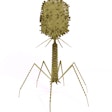
Phytogenic feed additives, also known as plant-based feed additives or botanicals, can be used effectively in antibiotic-free production.
According to Delacon, a producer of phytogenics, “Phytogenic feed additives are a top solution for multi-species animal nutrition. They are a key piece for solving present and future challenges, including those posed by consumer-driven market demands such as cage-free hen housing or ‘no-antibiotics-ever’ programs.”
“Phytogenic feed additives using plant extracts show greater modes of action in animal nutrition compared to synthetic (chemically produced) nature-identical substances,” Delacon says on its website. “This advantage is based on the synergistic effects of all agents within a plant, which have not been reduced to the effects of a single lead substance. This natural synergy, combined with sustainability and safety, makes our plant-based feed additives a top solution platform in multispecies animal nutrition.”
The use of phytogentics, such as herbs and spices, essential oils, polyphenols, saponins and tannins, can provide a first line of defense against disease in an animal’s gastrointestinal tract. Phytogenics have been shown to reduce the pathogenicity of the intestinal microbiota, stimulate intestinal integrity and immunity, and limit oxidation and inflammation in the intestinal epithelial cells in ways that resemble the effects of antibiotic growth promoters.
Read on to find out about seven types of phytogenics for antibiotic-free production, according to Delacon.
1. Tannins
Tannins, such as chestnut and oak bark, berries and peppers, can reduce ruminal protein degradation, reduce ammonia emissions, and work as antioxidants and anti-inflammatories.
2. Pungent substances
Pungent substances, like peppers, gentian, garlic and onion, promote blood circulation, facilitate digestion and increase secretion of digestive juices.
3. Bitter substances
Bitter substances, including dandelion, hops, garlic and gentian, also can increase secretion of digestive juices and stimulate appetite.
4. Essential oils
Essential oils, like those from rosemary, thyme, clove, linseed, citrus fruits, yucca and quillaja, have antioxidant properties, improve nutrient absorption and stimulate appetite.
5. Saponins
Saponins can improve nutrient absorption, increase permeability of cell walls and reduce ammonia emissions. Saponins include soapwort, quillaja, yucca, citrus fruits, linseed and clove.
6. Flavonoids
Flavonoids stimulate the immune system, inhibit inflammation and support quick removal of toxins from the body. Flavonoids include celeriac, coltsfoot and soapwort.
7. Mucilages
Mucilages, like flax, coltsfoot and berries, protect the intestinal barrier and prevent accumulation of bacterial pathogens.
















